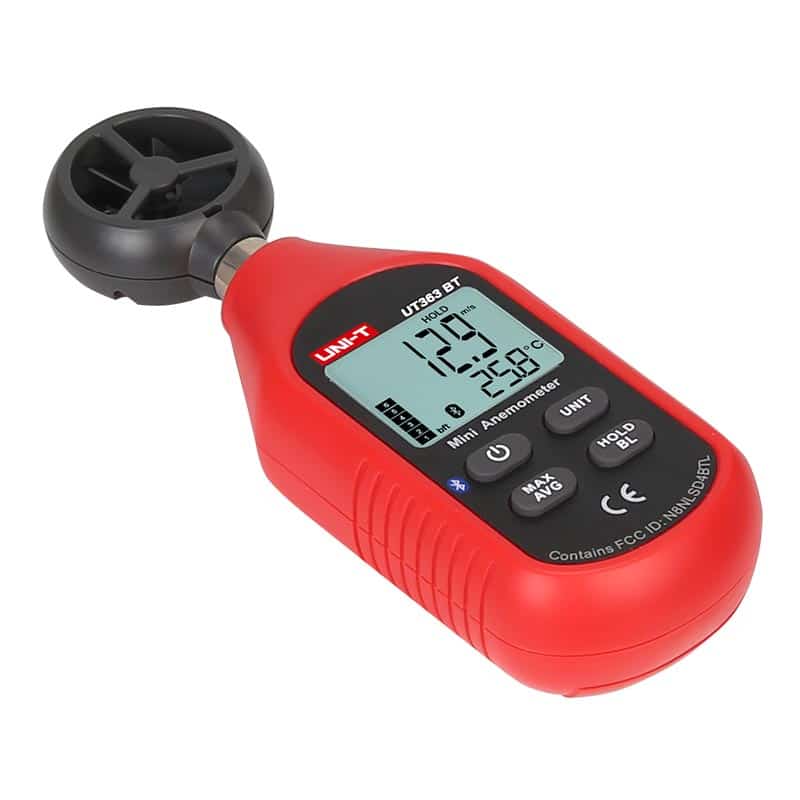Picking the Right Anemometer: A Comprehensive Buying Guide
Picking the Right Anemometer: A Comprehensive Buying Guide
Blog Article
All You Required to Understand About Anemometers: Just How They Work, Why They Matter, and Where to Make use of Them
Anemometers, though usually overlooked in the world of scientific instruments, play a critical duty in different fields, offering useful insights into wind speed and air flow patterns. Understanding the technicians behind these devices is important for anyone looking for to harness the power of this data. From meteorologists tracking climate patterns to engineers making structures with wind lots in mind, the applications of anemometers are diverse and far-reaching. As we explore the complexities of anemometer modern technology, we will reveal the inner workings of these tools, their value, and the vital factors to consider when choosing the best anemometer for particular applications.

Anemometer Basics
An important instrument used to measure wind rate and instructions, the anemometer plays a vital function in meteorology and various industries. An anemometer typically contains 3 or 4 mugs that revolve in the wind, a vane that directs right into the wind, and sensors to track the movements or rotations. By computing the rotations or movements over a details time duration, the anemometer can establish wind rate. The vane helps determine wind instructions by directing into the wind, providing valuable information for weather condition forecasting, aeronautics, maritime operations, ecological surveillance, and wind energy applications.
There are various kinds of anemometers readily available, including mug anemometers, vane anemometers, hot-wire anemometers, and sonic anemometers, each with its one-of-a-kind functions and applications. Mug anemometers are commonly utilized for basic wind rate dimensions, while vane anemometers are liked for directional dimensions.
Principles of Anemometer Operation
Structure on the fundamental understanding of anemometer essentials, the concepts of anemometer operation elucidate the auto mechanics behind wind rate and instructions dimensions. Anemometers operate on the principle of airflow impacting a sensor, triggering it to revolve. Cup anemometers, for instance, have 3 or even more cups that capture the wind, triggering them to rotate much faster as the wind rate rises. The turning rate is after that transformed into a wind speed dimension. Vane anemometers, on the various other hand, use a tail or a probe that aligns itself with the wind direction, supplying a dimension of wind direction based on the positioning of the sensor. Hot-wire anemometers depend on a heated wire that cools down as wind passes over it, with the rate of cooling determining the wind rate. Ultrasonic anemometers measure wind rate and direction by analyzing the moment it considers ultrasonic signals to take a trip in between transducers. Understanding these principles is vital for exact and dependable wind measurements in numerous applications.
Importance of Anemometers
The importance of anemometers in meteorology and numerous markets can not be overstated. Anemometers play an important function in measuring wind rate and direction, offering vital data for climate forecasting, environment researches, environmental surveillance, and air travel procedures. Meteorologists count on anemometers to gather exact wind data, aiding them understand climate patterns, anticipate tornados, and issue timely cautions to the public. In sectors such as building, farming, sustainable power, and maritime operations, anemometers are used to optimize procedures, guarantee safety and security, and increase performance. Wind ranch operators utilize anemometers to analyze wind conditions and maximize electrical power production from wind generators. In the maritime sector, anemometers help ship navigating by providing real-time wind info to captains, aiding them make educated choices to make certain safe voyages. On the whole, anemometers are important devices that add substantially to safety and security, effectiveness, and educated decision-making in weather forecasting and a large range of industries.
Applications Throughout Different Industries
In the renewable energy sector, anemometers play a critical duty in assessing wind conditions for wind click farm placements, guaranteeing ideal energy production. Industries like building and mining use anemometers to keep an eye on wind rates, essential for security procedures, especially when working at elevations or in open-pit mines where solid winds can position risks. In farming, anemometers help farmers in taking care of plant splashing by supplying real-time data on wind speed to stay clear of drift.

Selecting the Right Anemometer for Your Requirements
For general functions, a mug anemometer is appropriate for determining wind rate, while a vane anemometer offers wind instructions data. Hot-wire anemometers are ideal for low airspeed dimensions, and ultrasonic anemometers offer high precision and toughness.

Conclusion
In verdict, anemometers play a vital function in gauging wind speed and instructions throughout numerous industries. Comprehending the principles of anemometer operation is important for selecting the best device for specific demands. From meteorology to aeronautics, anemometers are crucial tools for ensuring and gathering accurate information safety and security in different applications. It is essential to consider the relevance of anemometers in order to make educated decisions when picking one of the most appropriate tool for determining wind problems.
There are different kinds of anemometers offered, consisting of cup anemometers, vane anemometers, hot-wire anemometers, and sonic anemometers, each with its one-of-a-kind features and applications. Cup anemometers are generally used for basic wind speed dimensions, while vane anemometers are preferred for directional measurements. Hot-wire anemometers are appropriate for low airspeeds, and sonic anemometers are excellent for high-precision measurements in study and industrial settings.Building on the fundamental understanding of anemometer basics, the principles of anemometer operation clarify the technicians behind wind speed and instructions This Site dimensions. For general functions, a mug anemometer is appropriate for gauging wind speed, while a vane anemometer gives wind direction data.
Report this page